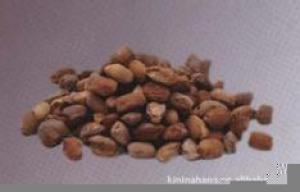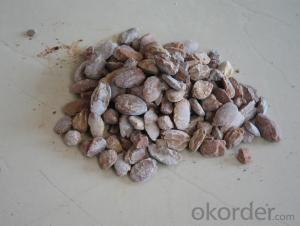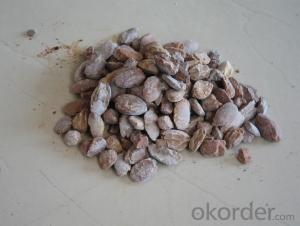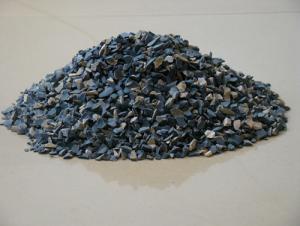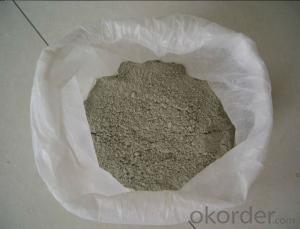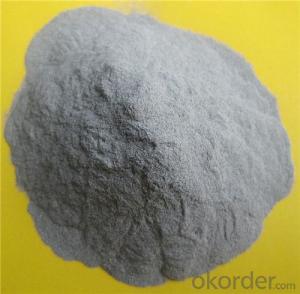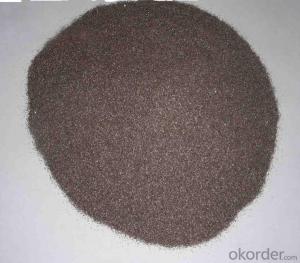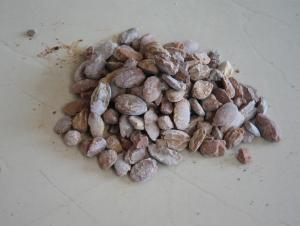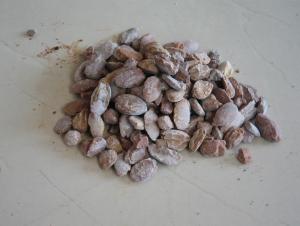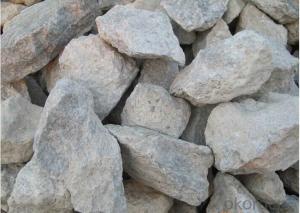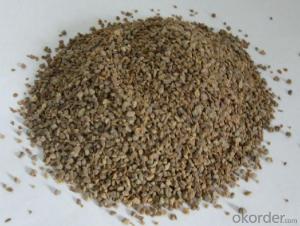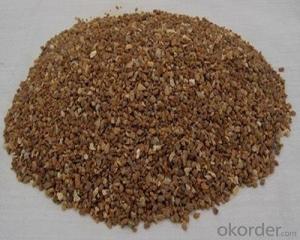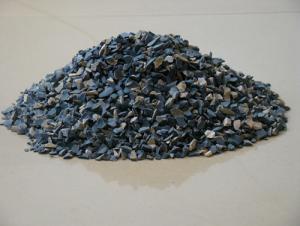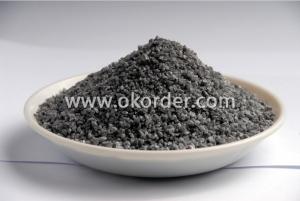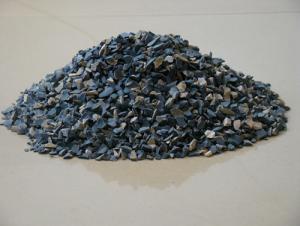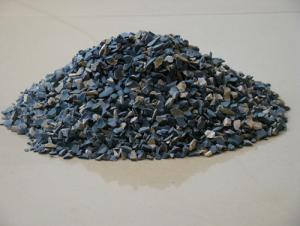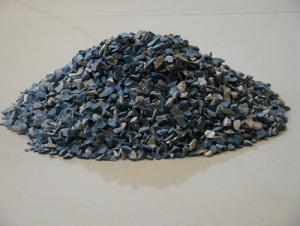Raw Materials for Refractory:Dead Burnt Magnesite 96
- Loading Port:
- Dalian
- Payment Terms:
- TT OR LC
- Min Order Qty:
- -
- Supply Capability:
- 2000 m.t./month
OKorder Service Pledge
OKorder Financial Service
You Might Also Like
DBM-is produced using selected natural magnesite that is purified and is calcined in a shaft kiln.The final product is used for electric furnacefloors and furnace liner tamping.
Many typical specification as following :
Grade | MgO (min.) | SiO2 (max.) | CaO (max.) | Fe2O3 (max.) | Al2O3 (max.) | L.O.I. (typical) |
mesh |
DBM90 | 90.00% | 1.00% | 1.50% | 0.70% | 0.10% | 1.70% |
0-400 |
DBM95 | 95.00% | 1.00% | 1.50% | 0.80% | 0.10% | 2.60% | |
DBM96 | 96.00% | 1.50% | 2.50% | 0.80% | 0.30% | 2.90% | |
DBM97 | 97.00% | 3.00% | 2.50% | 0.80% | 0.30% | 3.40% |
Packaging & Shipping of DBM :
Packaging: 1.25MT jumbo bags or 1MT jumbo bags
Delivery details: according to customers’ requirements
Application of DBM:
1.Mainly used in processing raw materials of different magnesia refractory,
2.The production of steel lining the bottom and ramming mixes;
3.The raw materials of magnesia brick and magnesia-chrome brick;
4.Used electric steel making furnace, heating furnace, non-ferrous metals blowing converter furnace the bottom and the lining of the refractory materials.
- Q: How many kinds of fireproof materials are there in the market?
- Inorganic insulation materials basically can achieve the goal, such as glass wool, rock wool, and foam glass. The phenolic foam in the organic foam materials is special. Phenolic foam is not only good at insulation, but also good at compounding with steel and other materials to achieve A-level performance, and the A-level insulation materials are: rock(ore) wool, foam glass and inorganic thermal insulation mortar. Insulation materials with B1 combustibility mainly are: Phenolics, polystyrene granules, etc. The insulation materials of fire barrier zone can use such A-level materials as rock (ore) wool, foam glass, and inorganic thermal insulation mortar, etc.
- Q: What is the function of refractory material?
- Refractory is a basic material in the field of high temperature technology. Generally, the refractory is used as structural material or lining to resist high temperature in various thermal equipment and high temperature container. In the iron and steel industry and metallurgy industry, coke ovens are mainly composed of refractory materials. Various refractories that meet the requirements are essential in blast furnace for ironmaking, hot stove, all kinds of steel-making furnaces, soaking furnace and heating furnace. Not only the die casting for molten steel needs lots of refractory materials, but also the continuous casting needs some high-quality refractory materials. Without high-quality refractory materials, external refining is also not impossible to achieve. Statistics show that the steel industry is the sector that needs the most refractory. Pyrometallurgy and thermal processing of ferrous metal also needs refractories. All high-temperature furnaces or lining in construction materials industry or other high temperature industries that produce silicate products such as glass industry, cement industry, and ceramics industry must be constructed with refractory materials. All kinds of roasting funaces, sintering funaces, heating furnaces, boilers, flues, chimneys and protective layers in chemical, power and machinery manufacturing industry need refractories. In short, when some kind of structures, devices, equipments or vessels are used under high temperature, they all should utilize refractory to resist the high temperature because those materials will deform, soften and fuse or will be eroded, scoured or broken due to the physical, chemical, mechanical effects, which may stop the operation, affect the production, contaminate processed objects and impact the quality of products.
- Q: How to count the construction costs of refractories?
- In winter, the temperature of the the fire-resistant masonry, fire-resistant plastic, sodium silicate, phosphoric?acid castable should be maintained above 5 ℃. Usually greenhouses in which heating facilities are installed to maintain the appropriate temperaturere for the construction environment should be erected in refractory masonry. The temperature around the construction site of the industrial furnace and refractory masonry shall not be lower than 5 ℃.
- Q: What's the organzational structure of refractory material?
- Ingredients (harmful); phase composition. The main components of refractory material include chemical composition and phase composition. The addtional components include main crystal phase, matrix, crystal phase, chemical composition
- Q: What are the characteristics of the carbon composite refractories?
- The features of carbon composite refractories: 1. It is with an aggressive high thermal shock resistance 2. Good resistance to molten steel and slag
- Q: How is the fire endurance of the fireproof paint?
- Fireproof endurance. fire resistance test of certain building components showed by standard time temperature curve from starting of fire to lose the supporting capabilities or its integrity or fireproof property. The fire proof endurance is 5hours.
- Q: What kind of refractory bricks material is best?
- Domestic experimental electric furnace body is made up of hearth, insulating layer and shell. Sic and high-alumina material are often used in traditional electric furnace under 1300℃ traditional furnace, while corundum material is used in 1600℃. Laboratory furnace of Occident usually uses ceramic fiber tank which is characterized by rapid temperature raising, good accuracy, light weight and small volume. In recent years, domestic Hangzhou blue sky Instrument and Shanghai laboratory equipment all have been produced by experimental furnace with ceramic fiber tank.
- Q: Which refractory is better for building 1500 degree kiln ?
- The top and wall use alumina hollow ball brick. If it is cubic kiln, the kiln bottom should use heavy corundum brick. If it is continuous kiln, burning zone should use alumina hollow ball brick, burning zone seal and kiln car face brick. If it is pit furnace, curved seal should use heavy corundum brick, and furnace wall and top should use alumina hollow ball brick. That depends on what kind of kiln it is. Curved seal and kiln car should use heavy corundum brick. You can add me friends to have further talks.
- Q: I am a refractory material manufacturer, sold products, money is always not back, anxious to die, what is the way?
- Metallurgical industry downturn. There is fierce competition in the refractory industry.
- Q: What is the the best ratio of mortar in refractory cement?
- The ratio of refractory cement are: M10 the ratio of cement and mortar: cement: Sand= 346kg: 1631kg M7.5 ratio of cement and mortar: cement: Sand =274kg: 1631kg M5 The mix proportion of cement and mortar: cement: Sand = 209kg: 1631kg M10 mix proportion of composite mortar: cement: Sand: Lime =306kg: 1600kg: 29kg M7.5 mix proportion of composite mortar: cement: Sand: Lime =216kg: 1600kg: 64kg M5 The mix proportion of composite mortar: cement: Sand: Lime =205kg: 1600kg: 100kg
Send your message to us
Raw Materials for Refractory:Dead Burnt Magnesite 96
- Loading Port:
- Dalian
- Payment Terms:
- TT OR LC
- Min Order Qty:
- -
- Supply Capability:
- 2000 m.t./month
OKorder Service Pledge
OKorder Financial Service
Similar products
Hot products
Hot Searches
Related keywords
